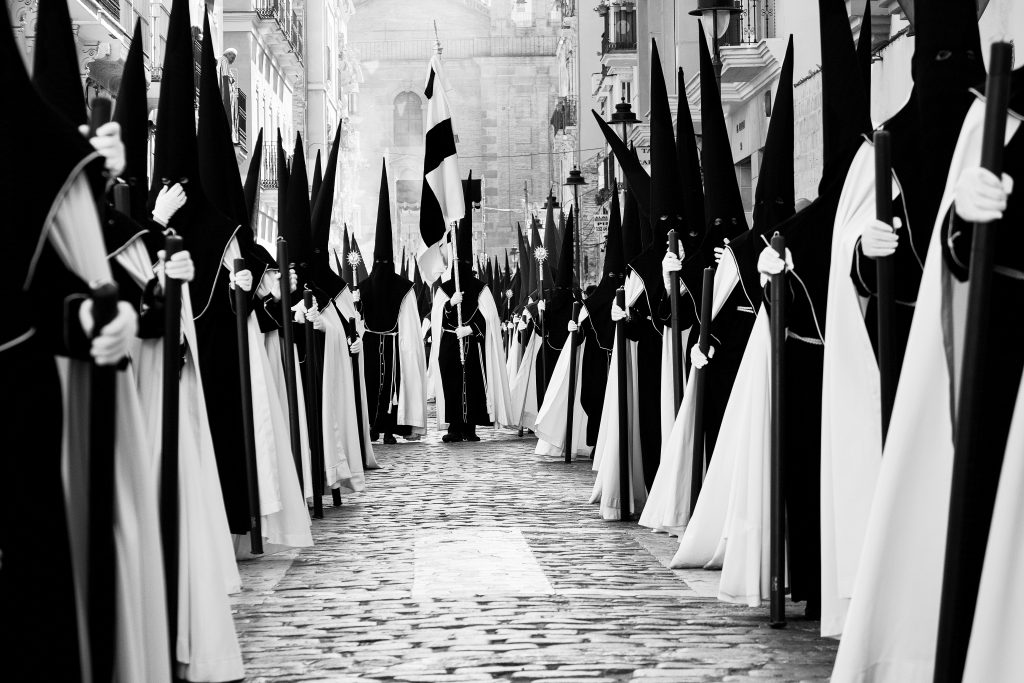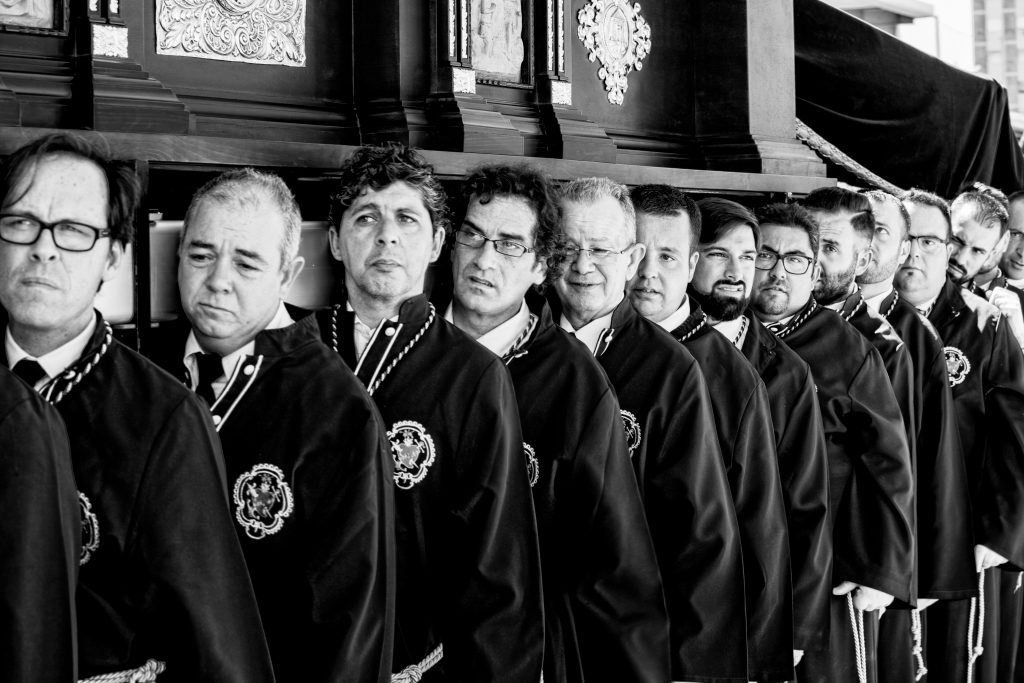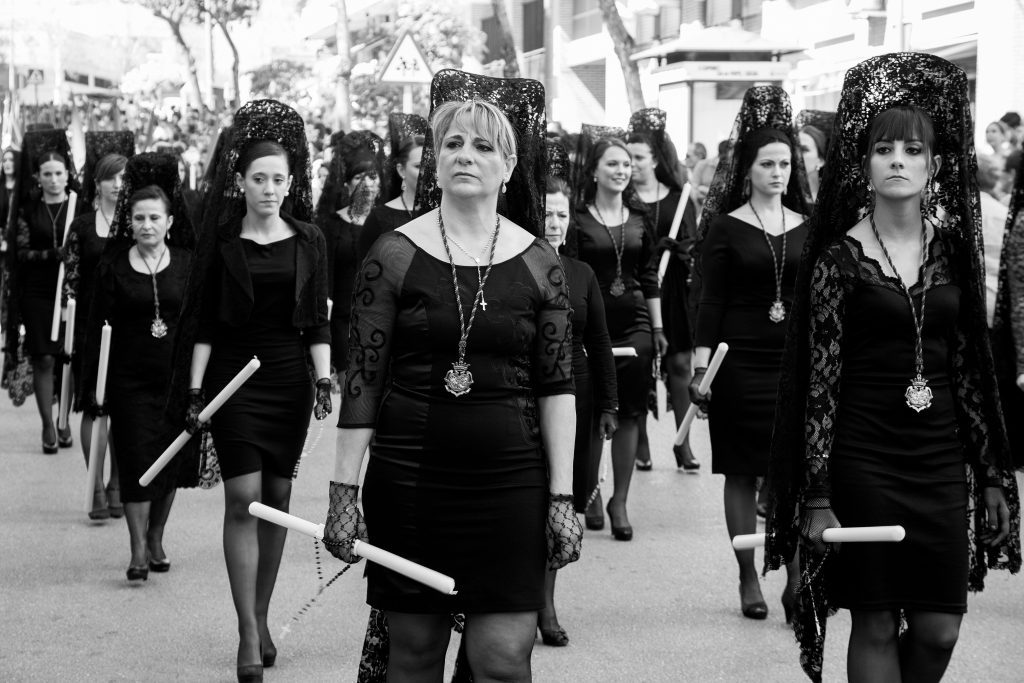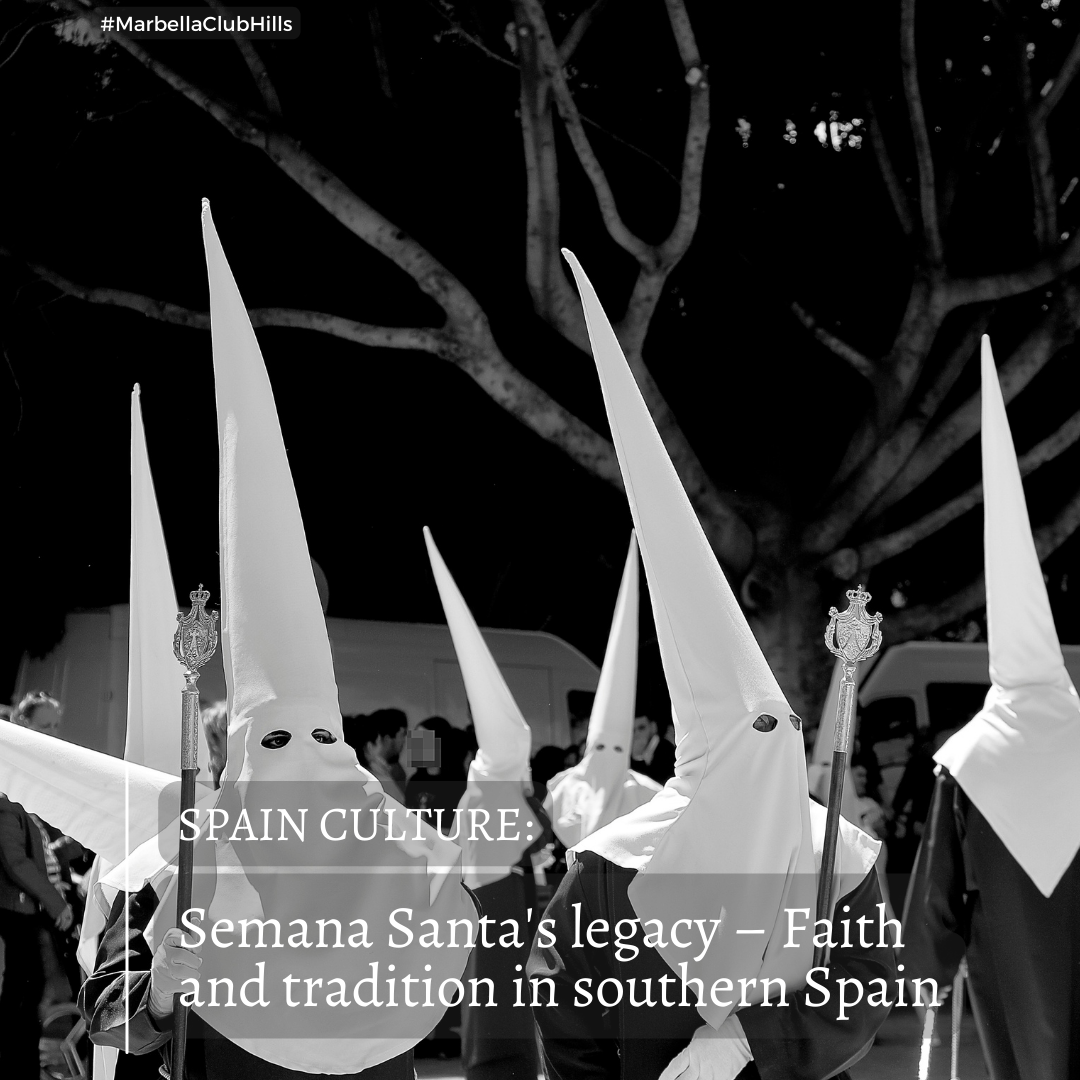The roots of Semana Santa (Holy Week) trace back to medieval Spain, originating as a manifestation of the Catholic faith. Over centuries, it has evolved, shaped by historical currents and local customs, into a celebration that captures the imagination and devotion of millions. In the south of Spain, particularly in regions like Andalusia, Semana Santa takes on an unparalleled intensity, where each procession and prayer echoes the deep historical ties binding the present to the past.
Each city in Andalusia has its own unique traditions and peculiarities for Semana Santa. For example, in Seville, the "Madrug탡" procession takes place in the early hours of Good Friday and is one of the most followed and revered events. Meanwhile, Málaga is known for its "tronos" (thrones), some of which are so large they require over 200 men to carry them.
In this blog, we'll introduce you to how faith, culture, and community weave together in a spectacle that transcends the ages, inviting onlookers into a world where the sacred embrace the communal.
The Heartbeat of Brotherhoods
At the core of Semana Santa's enduring legacy are the Hermandades or brotherhoods. These religious associations, some dating back to the 15th century, are the custodians of tradition, orchestrating the week's events with a dedication that spans generations. Their role transcends mere organization; they are the spiritual stewards, fostering a sense of belonging and community among their members. The brotherhoods embody the spirit of Semana Santa, channeling the collective faith and passion of their towns and cities into a vibrant tapestry of cultural identity.

Photo by Quino Al
Curious fact about Semana Santa
Ancient Brotherhoods: Some of the brotherhoods (hermandades) that participate in Semana Santa processions date back several centuries, with histories as rich and complex as the region itself.
A Confluence of Culture and Faith
Semana Santa stands as a pillar of both cultural and religious significance. It's a time when the stories of Christianity come to life, with each procession and paso depicting scenes from the Passion of Christ. This period of reflection and celebration offers a window into the soul of southern Spain, where the fervour of faith blends seamlessly with the pride of tradition. The week-long observance not only reinforces the religious convictions of many but also serves as a testament to the enduring strength of Spanish cultural heritage.
Traditions Carved in Time
From the haunting march of the Nazarenos to the solemn journey of the Pasos, carried with reverence by the costaleros, Semana Santa is a mosaic of enduring customs. The air fills with the scent of incense, the sound of marching bands, and the solemn melodies of saetas (traditional, deeply emotional flamenco songs sung a cappella from balconies or in the streets during processions. They are improvised prayers or expressions of faith, often moving both singers and listeners to tears), creating an atmosphere of deep contemplation and communal unity. These traditions, passed down through centuries, remain the lifeblood of Holy Week, each element a chapter in a larger story of faith, sacrifice, and redemption.

Photo by Quino Al
Curious facts about Semana Santa
Costaleros' Anonymity: The costaleros, who bear the weight of the heavy pasos (floats) on their shoulders, traditionally do so anonymously, as an act of humility and penance. It's considered a great honor to be chosen as a costalero, and the positions are highly coveted.
The Nazarenos: Participants known as nazarenos wear distinctive robes and pointed hoods (capirotes) that cover their faces, allowing them to maintain anonymity. These outfits can seem startling to outsiders but are deeply symbolic, focusing attention on the act of penance rather than the individual.
Silence Processions: In contrast to the elaborate and grand processions, some brotherhoods opt for silent processions. The most striking example may be the "Silencio" in Seville, where the only sounds are the march of the nazarenos' feet and the occasional clang of a staff on the cobblestone streets to signal stops or starts.
Experiencing Semana Santa
To be amidst the throngs during Semana Santa is to witness a profound expression of faith and tradition. It's an experience that moves beyond the visual spectacle, touching the hearts of all who partake. Participants speak of a profound sense of belonging and spiritual fulfillment, a testament to the power of this sacred week.

"Saetas" – traditional, deeply emotional flamenco songs – Photo by Quino Al
Curious facts about Semana Santa
Elaborate Flower Displays: The pasos are adorned with elaborate flower displays, which are carefully chosen for their symbolism. The colors and types of flowers used can vary significantly from one paso to another, depending on the image it carries and the brotherhood's traditions.
The Influence of Weather: Semana Santa processions are at the mercy of the weather. Months of preparation can be undone by rain, as the valuable pasos and their intricate decorations can be severely damaged by water. The decision to proceed or cancel a procession due to rain is a moment of high drama and emotion.
Culinary Traditions: Semana Santa also has its culinary customs. Torrijas, a type of sweet bread soaked in milk or wine, then coated in egg, fried, and sprinkled with cinnamon or sugar, is a traditional dish enjoyed during this holy week.
International Recognition: On February 16, 1980, the Semana Santa was recognised as an event of International Tourist Interest. This not only underscores its importance in Spanish culture but also highlights its appeal as a global phenomenon, drawing visitors from all over the world. Today, more than 5 million tourists visit Malaga's Holy Week.
"Vestir de Mantilla"
"Wearing the Mantilla" is a Spanish tradition that is part of numerous celebrations, including Semana Santa, particularly prominent in Andalusia. This custom involves women dressing in a specific outfit that includes a mantilla, which is a light veil or scarf worn over the head and shoulders. The mantilla is usually made of lace or a similar, delicate, and decorative fabric, and it is secured with a peineta, an ornamental comb that is inserted into the hair.

"Vestir de Mantilla" – Photo by Quino Al
The act of wearing the mantilla is considered a form of formal dress and respect in religious and ceremonial contexts. During Semana Santa, it is common to see women participating in the processions and attending religious services dressed in this manner, as a sign of devotion and respect. The tradition has its roots in the 18th century and has been maintained as an important part of Spanish culture and identity.

"Vestir de Mantilla" – Photo by Quino Al
The ceremonies of Semana Santa have started last weekend and they will end on Sunday, 31st of March 2024.


